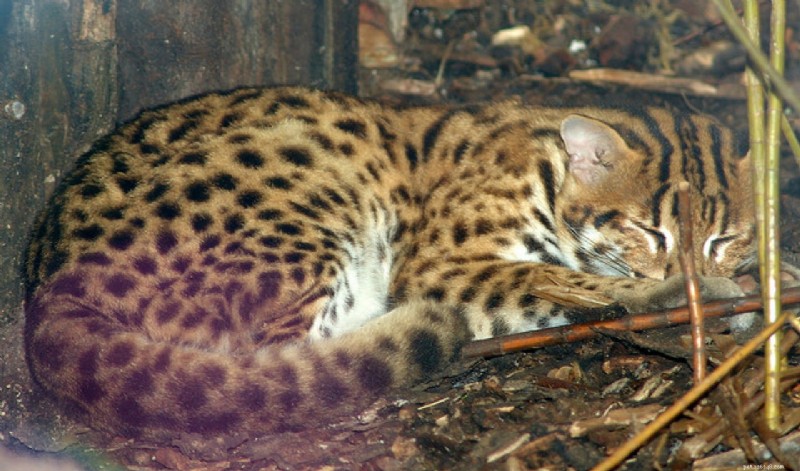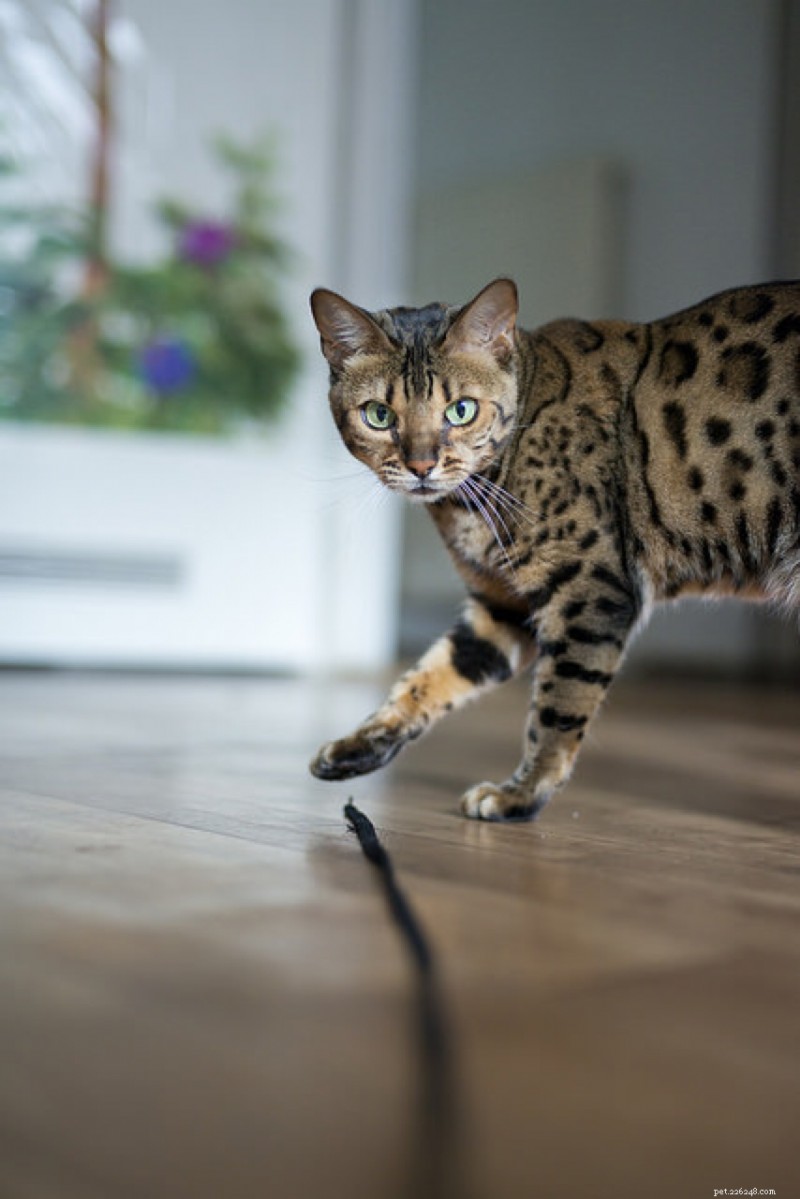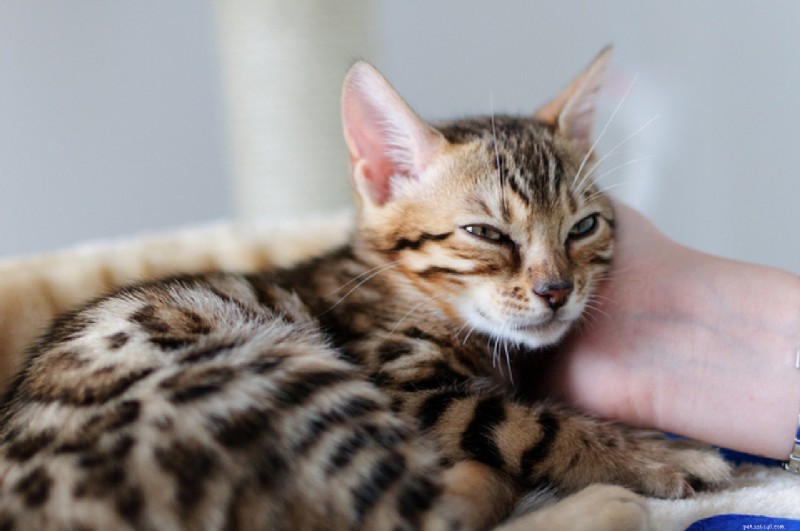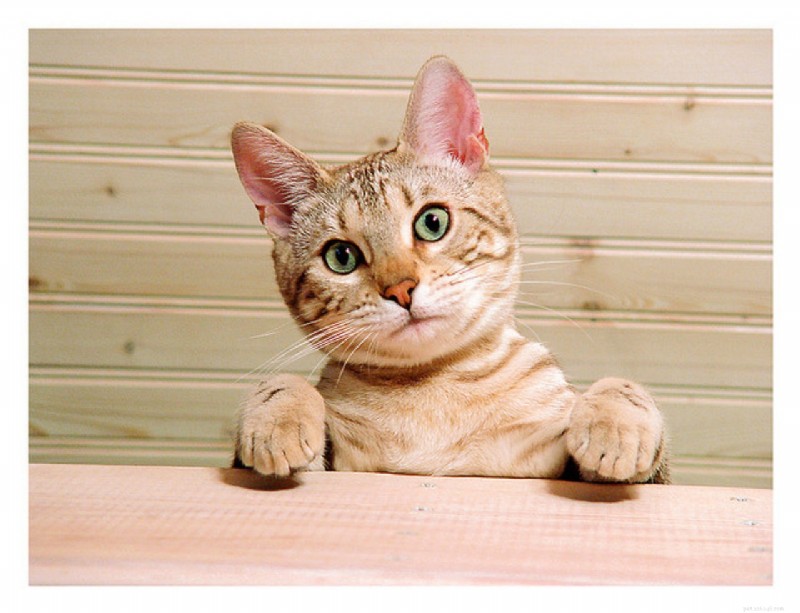O gato-de-bengala tem parentes selvagens não tão distantes

Esta linda raça de gato híbrido pode traçar seu DNA para felinos selvagens reais, ou seja, o gato leopardo asiático. É chamado de gato de Bengala pelo nome latino de sua progênie selvagem – Prionailurus bengalensis – embora o alcance do gato leopardo asiático se estenda além da pequena região de Bengala. Entusiastas de gatos e cientistas ficaram fascinados com a criação de híbridos desde o final do século 19, quando as exposições de gatos começaram a decolar. Ao longo das décadas de 1930 e 1940 foram registradas várias tentativas de criar o gato de Bengala moderno, com resultados decepcionantes.
Não foi até 1963 que o primeiro gato Bengal nasceu para Jean S. Mill, o produto de seu gato doméstico macho e um “gato leopardo” que ela comprou em uma loja de animais. Kin Kin, como foi nomeada, desafiou as expectativas dos cientistas e passou a produzir uma segunda geração de Bengals. A hibridização de gatos decolou na década de 1970, especialmente após a descoberta da imunidade natural de alguns gatos selvagens a doenças como FIV e FeLV. Jean S. Mill voltou a se concentrar nos gatos de Bengala em 1980, comprando vários para cruzar com um gato de rua parecido com um leopardo que ela encontrou na Índia.
O gato Bengal foi aceito pela The International Cat Association (TICA) como uma nova raça de gato em 1986, ganhando status de campeão em 1991. O show de hoje Os Bengals são a quinta geração desde os felinos originais de Jean S. Mill, muito distantes de suas raízes selvagens.
Personalidade e temperamento do gato de bengala

Embora seja importante lembrar que cada gato tem sua própria personalidade individual, existem algumas características que a maioria dos Bengals geralmente possui. A raça é conhecida por sua singularidade e é frequentemente descrita como inteligente, curiosa e interativa. Bengals são conhecidos por jogar jogos básicos como buscar ou esconde-esconde, aproveitando o tempo de brincadeira e travessuras em geral. Esses vídeos de gatos nadando contêm principalmente gatos de Bengala, dando voltas em uma banheira.
O apego aos humanos também é uma parte importante da personalidade de Bengala. If you’re looking for a constant companion, curious in everything you do, then this is the right breed for you! “Bengals will also, in general, ALWAYS want to be where you are. After all, that’s where the action is!” advises TICA. “And Bengals are all about ‘the action.'” Channel their high energy into mental stimulation, with puzzle toys, supervised outdoor visits or a catio, a birdhouse (to watch), or general hunt-based play with toys.
Bengal Breeders or Rescue?
Most pet parents looking for a specific breed of cat go straight to a breeder for their new fur baby. However, there are always breed-specific rescues that have plenty of felines who need furever homes. A quick Internet search for “Bengal rescue” shows organizations across the country (and world) dedicated to rehoming Bengal cats. Many Bengal rescues are regional, so even if the group isn’t based in your state, give them a call! If they can’t help you, ask if they know anyone in your area who can; the Bengal Rescue Network has affiliates in every corner of the country and even Canada.

However, if you do decide to go to a Bengal breeder, it’s important to ensure he or she is reputable and will provide you with a healthy pet. Besides your initial search, nothing should be conducted on the Internet! Always visit the breeder’s facilities and meet your pet-to-be in person before making any financial commitments. Ask to see other animals as well, and find out the daily routine – How much playtime do they get? When are they fed? Where do they sleep? For your future pet in particular, ask in-depth questions about personality, quirks, health, and even favorite toys or siblings. If a breeder is loving and professional, they should know the cat like their own pet – after all, they bring these “fur babies” into the world! Be wary of any breeders who want to ship an animal to you or will not provide you with a vet’s clean bill of health. Asking to meet you in a place besides your home or their facilities – say, a grocery store or parking lot – is also a red flag.
Marbled, Glitter, Silver and Snow Bengal Cats

While these may sound like items in a toddler’s craft kit, they’re actually Bengal coat colors and patterns! Most Bengals are varying shades of brown, according to Bengals Illustrated, the breed’s most popular magazine. “No matter what the color/tone, the pattern on a Bengal cat should yield a high degree of contrast,” the publication says. All-black Bengals, often called “pantherettes,” are unrecognized by the TICA for competition status, although many unaffiliated groups celebrate them. Long-haired Bengals have also been reported but are uncommon, the result of a recessive gene.
A marbled Bengal cat has more splotches and swirls than leopard-like spots, which can be reminiscent of a boa snake. The breed’s fur is noted for its excessive sheen, which often seems to glitter in direct light; flecks of gold or silver on the shaft of individual hairs gives the Bengal cat its shine. Sometimes mistaken for Egyptian Maus – whose facial structure, markings and body shape are much different – the silver Bengal is a relatively newcomer to the breed; true silvers have no yellow undertones, and pewter to black spots.
Although generally referred to as the white or snow Bengal cat, there are technically several patterns with a white base coat. Seal Lynx Points, Seal Minks, and Seal Sepias show a spectrum of contrasting colors – all have a coat color described as “creamy” white, not pure. Snow Bengals can have gorgeous green, blue or copper eyes, and coat patterns often develop as a kitten ages.
(Featured image via Wikimedia Commons)

